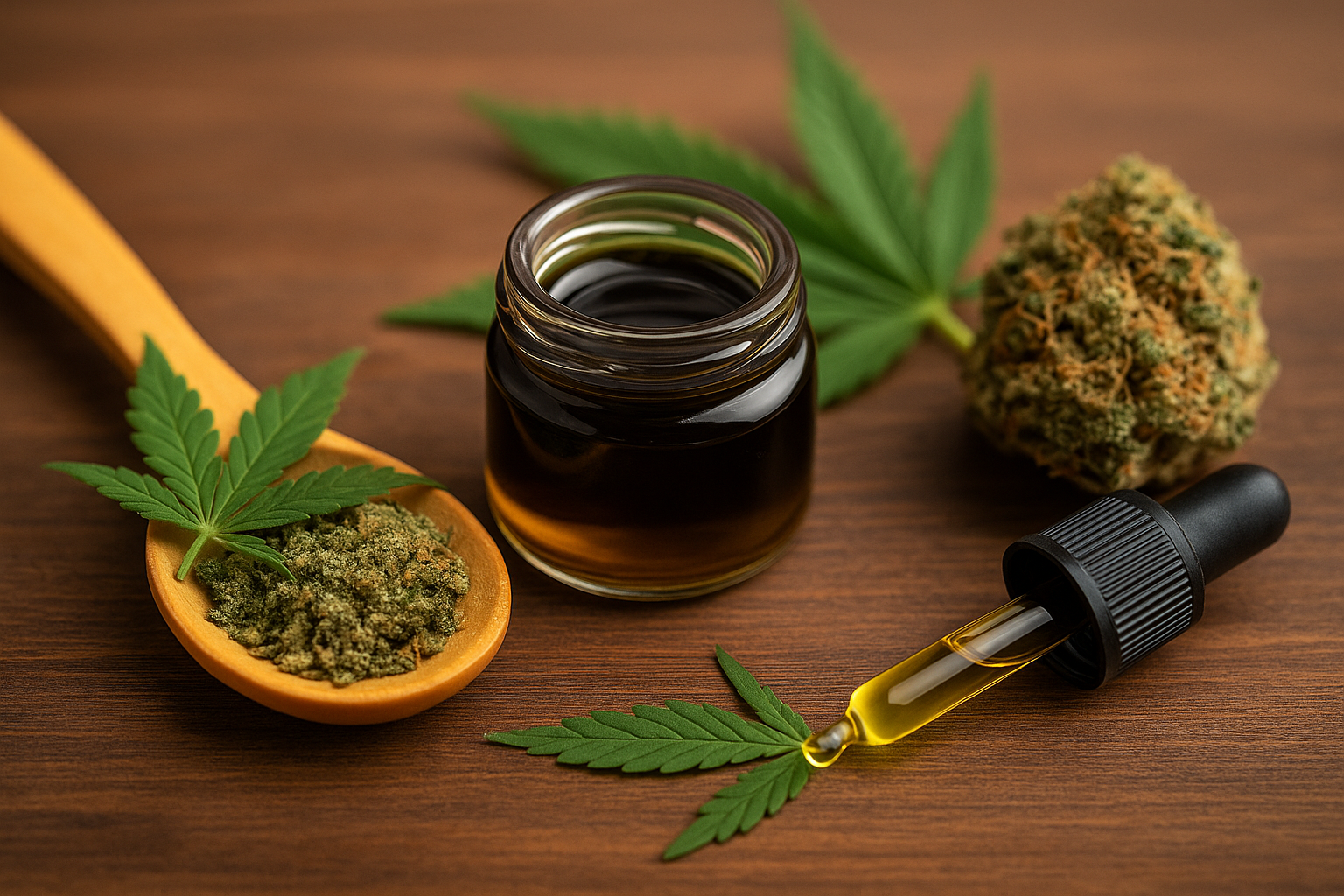Cannabis infusions are taking over kitchens, and Full-Spectrum Oil (FSO) is at the heart of this transformation. If you’ve heard about FSO but don’t know how to use it when infusing weed, you’re in the right place. This guide breaks it all down, step by step, making cannabis cooking easy, safe, and incredibly effective.
Whether you’re looking to make your own edibles or simply want to understand what goes into them, learning how to use FSO can help you craft more potent and well-rounded cannabis experiences. Let’s get started.
What is Full-Spectrum Oil (FSO)?
Full-Spectrum Oil (FSO) is a cannabis extract that contains the complete range of cannabinoids, terpenes, flavonoids, and other beneficial plant compounds found in the cannabis plant. Unlike isolates, which target a single cannabinoid like THC or CBD, FSO delivers the full experience, often referred to as the “entourage effect.”
The oil is thick, sticky, and usually dark in color, with a strong aroma and rich chemical profile. It’s often packaged in syringes for easy use and precise dosing. Because it maintains so much of the plant’s natural goodness, it’s especially popular among medical users and serious cannabis enthusiasts.
Why Choose FSO for Weed Infusions?
Potency and Efficiency
FSO is potent. A small amount goes a long way. This means you can infuse more power into your edibles using less product, making it cost-effective.
Full-Plant Benefits
Since FSO includes the full cannabinoid and terpene spectrum, your infusion won’t just deliver THC or CBD – it will also provide therapeutic benefits linked to other minor cannabinoids like CBG or CBN.
Versatility in Edibles
FSO can be used in a wide variety of recipes, from brownies and gummies to butter and beverages. It’s compatible with most fats and oils, which makes it ideal for infusion.
How to Use FSO When Infusing Weed
Let’s walk through the complete process of using FSO for infusions, from prep to final product.
Step 1: Gather Your Materials
Before you begin, you’ll need a few essentials:
- FSO: Start with a high-quality, lab-tested Full-Spectrum Oil.
- Carrier Fat: Coconut oil, butter, olive oil, or MCT oil all work great.
- Saucepan or double boiler: To gently heat and combine the ingredients.
- Measuring tools: Accuracy is key, especially with dosing.
- Glass jars or containers: For storing your infused product.
Step 2: Decarboxylation (If Needed)
Most FSO is already decarboxylated, meaning the cannabinoids are activated and ready to go. However, if your FSO isn’t labeled as such or you’re using it with raw cannabis, you’ll need to decarb it.
To decarboxylate:
- Preheat oven to 240°F (115°C).
- Place raw cannabis on a baking tray with parchment paper.
- Bake for 30–40 minutes, stirring occasionally.
Step 3: Infusion Process
This is where the magic happens.
- Heat the Carrier Fat: On low heat, gently warm your chosen fat (e.g., coconut oil).
- Add FSO: Squeeze in the desired amount of FSO and stir thoroughly until fully dissolved.
- Simmer Gently: Keep the mixture on low heat for 20–40 minutes. Avoid high heat to preserve cannabinoids.
- Optional Additions: Some people add lecithin to help improve bioavailability.
Step 4: Straining and Storage
If you’ve used only FSO, you won’t need to strain anything. However, if you added raw cannabis:
- Use cheesecloth or a fine mesh strainer to remove plant material.
- Store the final oil in an airtight glass container in a cool, dark place.
Your infused oil is now ready to use in recipes, capsules, or topicals.
Dosing Guidelines for FSO-Infused Products
Getting the dose right is key to a good experience. Here’s how to stay safe:
- Start Small: Begin with 1–2mg of THC and wait 1–2 hours to feel effects.
- Calculate Potency: If your FSO contains 70% THC, 1 gram = 700mg THC. Use this to determine your dosage per serving.
- Consistency: Stir the mixture well before using to ensure even distribution.
- Track Your Usage: Keep a dosing journal to record how different amounts affect you.
Safety Tips and Best Practices
When working with cannabis extracts, safety and precision matter.
- Label Everything: Clearly mark infused containers so no one accidentally consumes them.
- Store Safely: Keep products out of reach of children and pets.
- Stay Informed: Check local laws before making or using FSO-infused products.
- Avoid Overheating: Always use low heat to avoid degrading the cannabinoids.
Creative Ways to Use FSO-Infused Products
FSO-infused oils can be used beyond brownies and cookies. Here are a few fun ideas:
Edibles
- Add to baked goods like muffins, brownies, or cookies.
- Stir into sauces or dressings.
Beverages
- Blend into smoothies or protein shakes.
- Stir into warm drinks like coffee or tea (use an emulsifier if needed).
Topicals
- Mix with beeswax and essential oils for DIY balms.
- Combine with aloe or shea butter for skin-soothing salves.
Final Thoughts
Learning how to use FSO when infusing weed opens up a world of possibilities for DIY cannabis enthusiasts. It lets you control potency, experiment with recipes, and enjoy the benefits of full-spectrum cannabinoids at home. Take it slow, measure carefully, and enjoy your creations with confidence.
Ready to give it a try? Start small, stay safe, and don’t be afraid to get creative in the kitchen.
FAQs
Can I use FSO without infusing it into a carrier?
Yes, but it may be harder to dose accurately and may not taste great. Infusion helps with both flavor and absorption.
How long does infused oil last?
If stored properly in a cool, dark place, it can last up to 6 months or longer.
Is decarboxylation necessary for FSO?
Usually not, as most FSO products come pre-decarboxylated. But always check the label.
What’s the best carrier oil for FSO?
Coconut oil is a favorite due to its high fat content and neutral flavor, but MCT and olive oil also work well.
How do I make sure my doses are even?
Stir the infused oil thoroughly before portioning and use accurate measuring tools when cooking.









